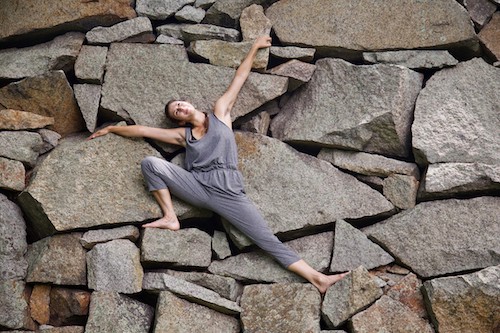
I’ve said it before, and forgive me if I say it again: Dancers can’t not dance. There they are on my laptop’s window—at work in their apartments, in parks, on piers, and in empty streets. Photographing yourself, all alone, practicing grand battements may not constitute a convivial class, but it keeps you in shape while a pandemic sputters and swells and diminishes around you. Maybe partners and roommates have filmed you performing; maybe you just attached your cell phone to a music stand and shooed the cat away.
Dušan Týnek’s Quarry Dance IX is nothing like the above. It is also a little different from his previous eight related works, in that we can’t view it sitting among others on an outdoors site. Instead, we watch it on our computers. The Brooklyn-based choreographer has taken members of his company to Rockport, Massachusetts and filmed them in three of the numerous granite quarries that dot the justly named town (these particular three privately owned). Lisa Hahn, Executive Director of Rockport’s Windhover Performing Arts Center, has brought Quarry Dance IX into our homes.
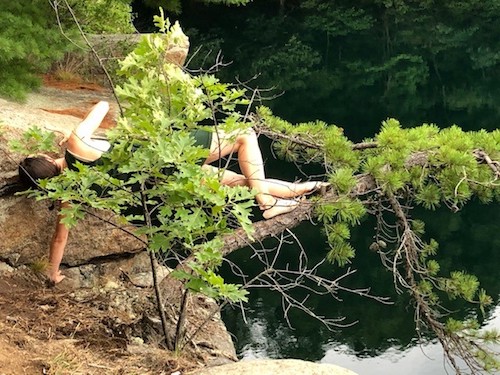
The settings are beautiful. Left to themselves, the quarries fill up with water. Wind ripples their surfaces. I know from experience that sometimes the deep waters hold leftover machinery, but you’d never guess that. In several of Quarry Dance IX’s images, pine trees have rooted in the cracks between stones. Sometimes Russ Gershon’s spare music sensitively accompanies the fourteen short dances, but at other times, we hear water rushing and splashing.
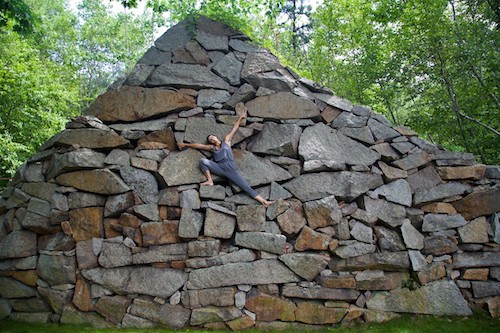
What moves me most about the piece is the intrepidness and the bravery of the dancers: Alexandra Berger, Gary Champi, Jessica Cipriano, Elizabeth Hepp, and Týnek. Their changing clothes, mostly in shades of gray or green, unite them with the environment. They perform barefoot on rocky surfaces high above the quarries or wedged between huge stacks of sawn boulders or up to their necks in water. They leap across crevices. Photographer Anders Johnson is equally brave, judging by a photo of him holding up a camera while sitting in his boat: a floating inflatable swan. Sometimes we see the performers as small figures among the gigantic stone blocks. At other times, the camera shows in extreme close-up just their heads and reaching arms, or their feet seeking toeholds.
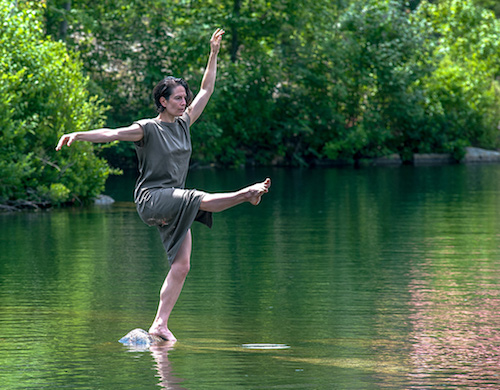
I admire the fact that Týnek doesn’t appear to have choreographed solos or duets and then transported them to the setting. The dances seem to grow out of their environments, to collaborate with the quarries’ rocks and water. Champi rests, maybe even sleeps briefly, against a slanted stone. Hepp swings around a pine tree before dropping toward the water. Cipriano meets Champi on a grassy peninsula, and they dance, facing each other and close together, having fun, although they never touch. Berger balances on one foot on a rock surface that pokes up out of the water; the stone is so tiny that her dance involves a negotiation with what is possible. Hepp hops and rolls on a ledge before falling backward into the quarry. Týnek leaps between stones. On adjoining rocky surfaces, Berger and Champi copy each other’s moves.
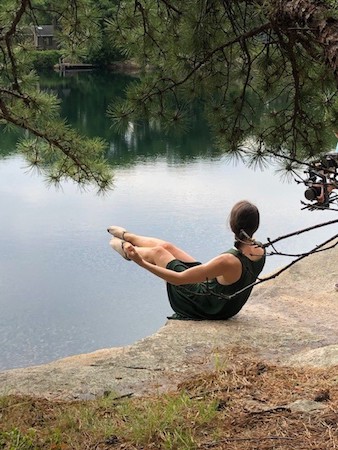
The choreographer plays a game with Champi and Cipriano, both wearing gray: He plunges into the water from a small carved-out ledge that’s even with it, but it’s she who emerges from the pool. She falls back, and he climbs out. He plunges in again, and she reappears. In extreme close-up, a man adjusts to the crevice into which he has wedged himself, and the camera slides away to reveal a woman also sheltering in stone. As the music taps eerily, the camera pulls back to reveal that the two are close enough to reach out to each other.
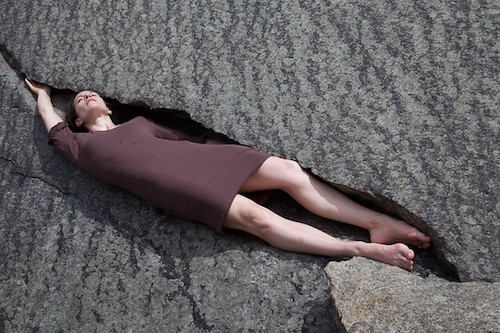
It’s not only the towering rocks that these courageous dancers inhabit. As I’ve said, they fall into the water and rise from it, but they may also sink into it up to their necks or emerge partly out of it and flick the water into the air. Yes, of course, they dry off and go home. But they’ve shown us something both beautiful and disturbing. Stone and liquid are their world, and they must embrace the hard surfaces, yield to the cold water.

Note: The photographs were taken by Peter Van Demark, David Watts, Jr. or Anders Johnson.

It’s wonderful when dances grow out of the environment they are set in.